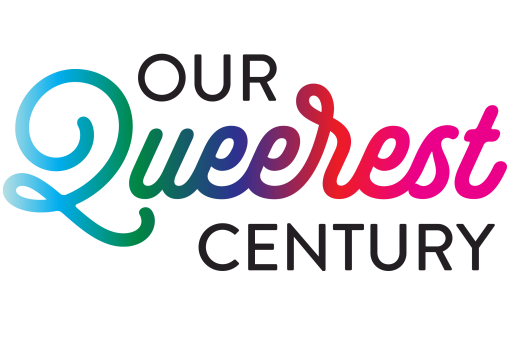Against a dark, inky background, two figures embrace. One envelopes the other, as his hand obscures a face we might otherwise have seen. The second figure faces a mirror as he cradles a camera, the lens pointed at us. We are watching a moment of tenderness.
With queer lives and culture under threat, Our Queerest Century highlights the contributions of LGBTQ+ people since the 1924 founding of the nation’s first gay rights organization.
Pre-order a copy of the series in print.
Paul Mpagi Sepuya’s “Darkroom Mirror (_2070386)” (2017) plays with our sense of closeness and distance, of seeing and not seeing. Sepuya “creates images that hold you,” novelist Justin Torres wrote in The Times’ Image magazine. They “give pause and invite reflection … very much like catching someone else, someone you care for, gazing into the mirror.”
Sepuya uses the mirror to explore the unknown, while nodding to the staged nature of the artist’s studio. His portraits are intentionally, and understandably, queer.
In “the queer subjectivity that I was thinking about,” Sepuya said, “there is not a need to have specific boundaries.” Definitions are “fluid.”
“The structure of the simultaneous positions in which people can relate to each other — that’s the thing that I’m thinking of as queer,” Sepuya said in a recent interview. “Not the fact that this is a portrait of someone and this is their sexual orientation or gender.”
Across the artistic landscape, queer creators and performers have always had an outsized influence — despite robust efforts to suppress their voices and force them into a box. In music and theater, the film and television industries, fashion and the visual arts, LGBTQ+ artists have left a clear and indelible mark.
In the last century, queer artists have increasingly stepped into their creative power, pushing boundaries and challenging the status quo. In the process, they have encouraged us all to reconsider the rigid ways in which we view the world and what is possible in art marking.
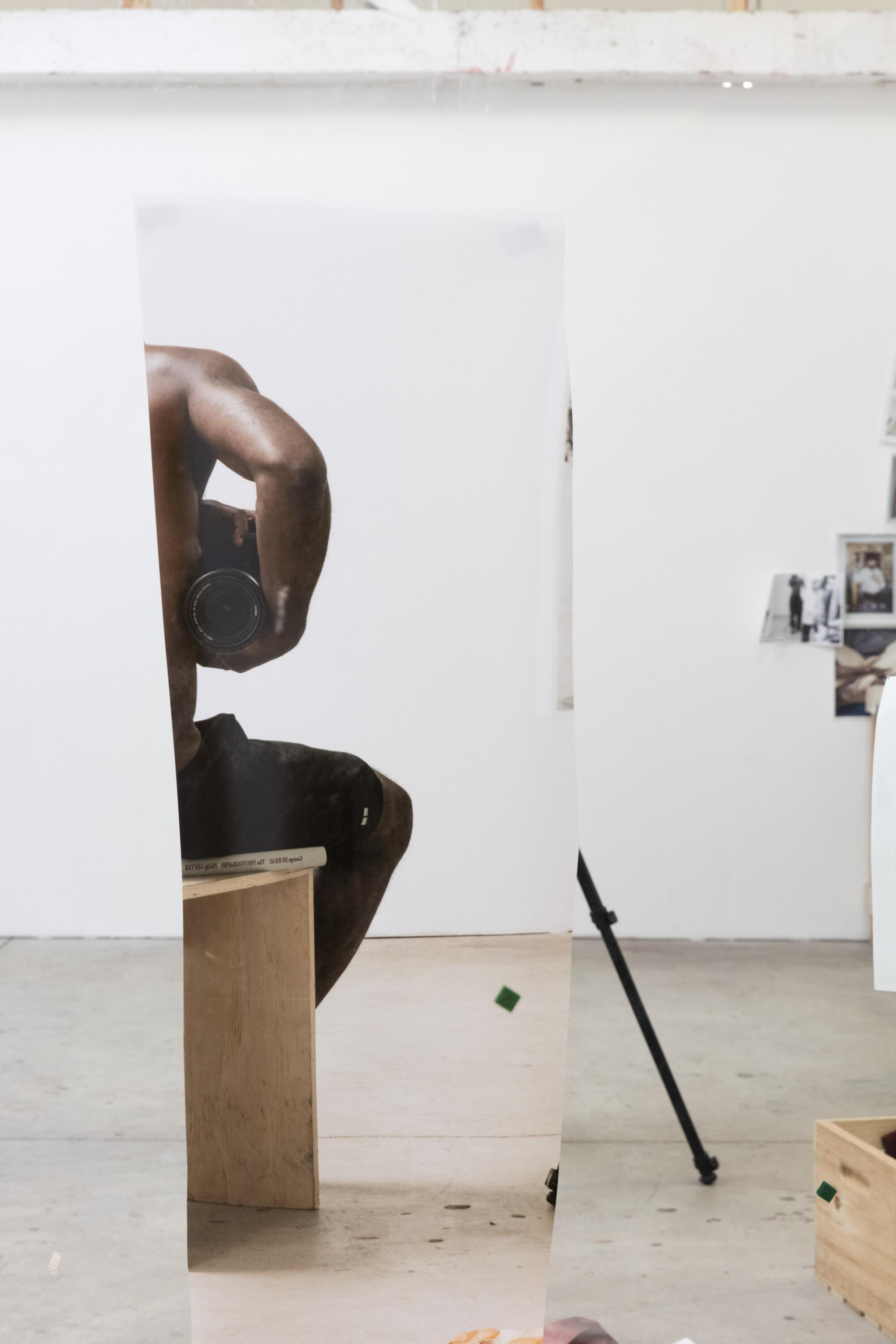
Queer photographers, in particular, have been on the vanguard of that movement, not only by capturing the world around them, but by turning their cameras back on themselves — a daring move in a disapproving world.
By focusing on themselves, their communities and the spaces they cherish, they have challenged and expanded our understanding of art and its boundaries, of image-making and culture, of how we see our bodies, our relationships and our communal resilience in the face of trauma such as AIDS, racism and sexism. They have created archives of the places and spaces that might otherwise be overlooked.
In April 1990, about a year after photographer Robert Mapplethorpe died of AIDS, “The Perfect Moment,” a retrospective show of 175 works, was scheduled to open at Cincinnati Contemporary Arts Center. It included his “X” portfolio, which featured black-and-white photographs of nude bodies and sexually explicit scenes. One of the images was a self-portrait showing the artist with his back to the camera, bent at the waist and peering over his shoulder, nude but for leather chaps, vest and boots, a bullwhip in his anus.
On opening day, a grand jury indicted the museum and museum director Dennis Barrie for pandering obscenity and using children in nudity-related material. Seven of Mapplethorpe’s photos, two featuring nude or partially nude children, were deemed obscene. It was the first time in modern history that a museum faced criminal charges for a work on display.
A jury ultimately rejected the argument from prosecutors that the photographs were pornographic and without artistic merit and found the museum and its director not guilty. The case was a win for queer artists, but also a warning: Queer artists have always been and continue to be under threat. Their influence is borne in part by their defiance.
In the 1960s and ‘70s, photographers like Kay Tobin Lahusen and Diana Davies captured images of activist movements and daily life in the queer community — images that were largely absent from popular culture. Donna Gottschalk portrayed lesbian intimacy. Joan E. Biren, also known as JEB, published the influential book “Eye to Eye: Portraits of Lesbians.”
From the 1980s to the early 2000s, Laura Aguilar created images that highlighted lesbian culture in Los Angeles, as well as nude portraits of herself and those around her.
In more recent years, the work of queer photographers, Sepuya among them, has become more visible. Early on, he photographed himself with folks in his community “as if they were, or had been, a lover.” Outside of the studio, they had different levels of friendship and connection, but in the photos, there’s a sense of desire, and Sepuya was curious how the images would be received. (His work has been widely praised, with one headline declaring that Sepuya “breathes new life into the genre of studio portraiture.”)
Over the last two decades, his photographs have lifted the curtain on the artist’s studio, investigating how images are constructed. Many of his photographs show him holding the camera, along with props, mirrors and lighting equipment in the background.
In a 2022 article for The Times, Leah Ollman wrote: “Sepuya complicates the studio-based portrait genre in his constructed scenes of male bodies (including his own) posing, entwining and looking through the camera, itself an instrumental character, with a sort of agency.”
In the context of art history, Sepuya points to how the studio, for centuries, was a place to view nude bodies for the sake of art-making. The camera, however, required photographers to look underneath a dark cloth, bringing critiques of “impropriety” to the forefront. His work brings that history forward, reminding us in ways others haven’t, that “sexuality and those drives and curiosity and playfulness” are all “part of the formation of these spaces to begin with,” he said.
Catherine Opie
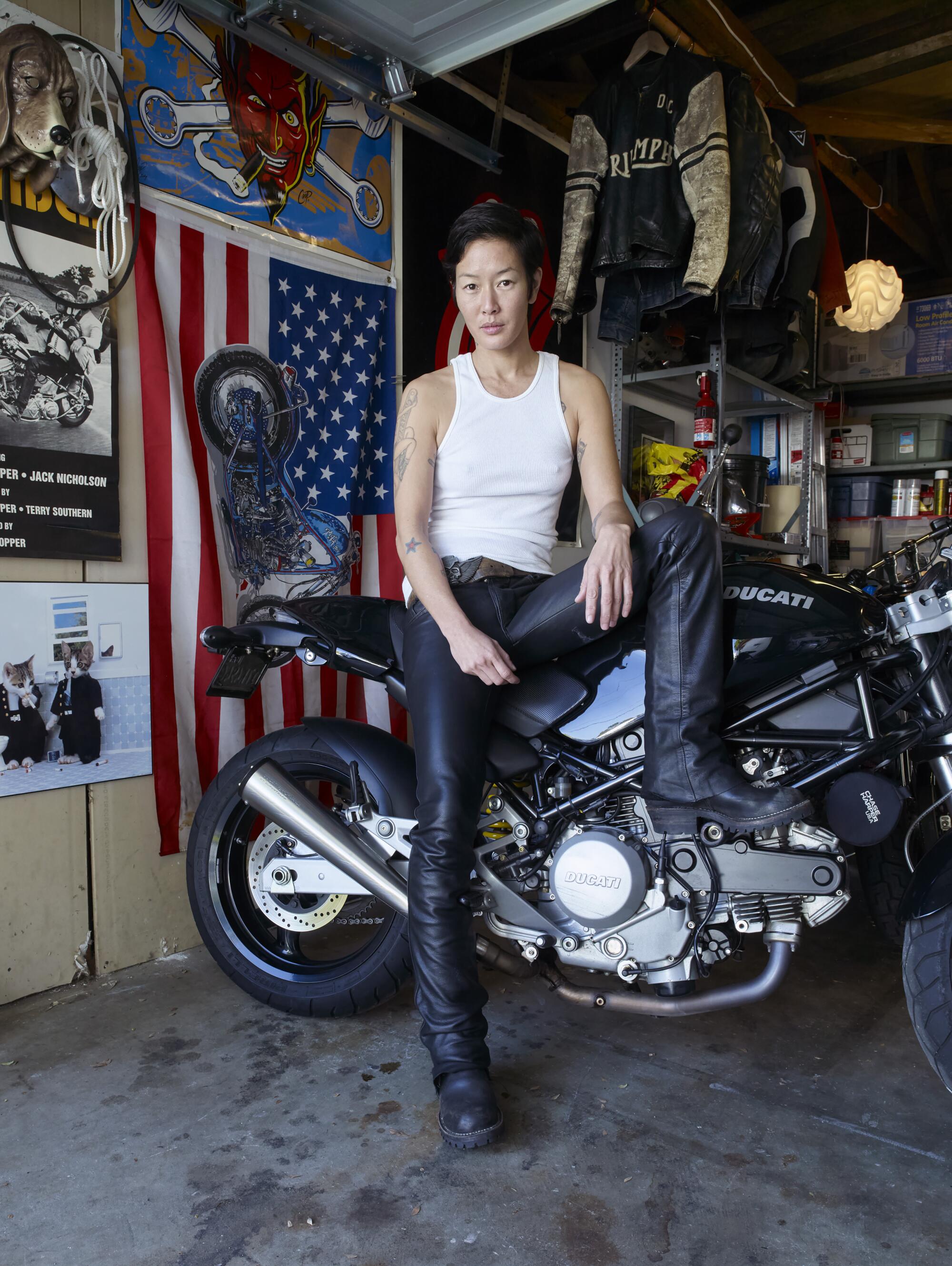
Renowned queer photographer Catherine Opie has called Sepuya’s work groundbreaking. For the last several decades, she has been taking photographs that capture and examine themes such as gender and sexuality, and class and space.
Her lens shifts from the social and universal to the achingly intimate; one of her most-discussed photographs is 1993’s “Self-Portrait/Cutting,” which depicts Opie’s back with fresh cuts across her skin. The cuts themselves depict a family portrait in a child-like, stick-figure style. The image captures a breakup and the unfulfilled dream of a domestic space with a family.
Earlier this year, the show “harmony is fraught” at Regen Projects presented Opie’s work across the decades, with an emphasis on Los Angeles in the 1980s and ‘90s, taken from her archives.
“I tend to be weepy at 62,” Opie said during a walk-through of the exhibition, explaining that the show is, perhaps, her most diaristic one to date. There’s a photograph of the artist at 28 that feels especially poignant; queer folks’ lives are often cut short due to violence or health issues.
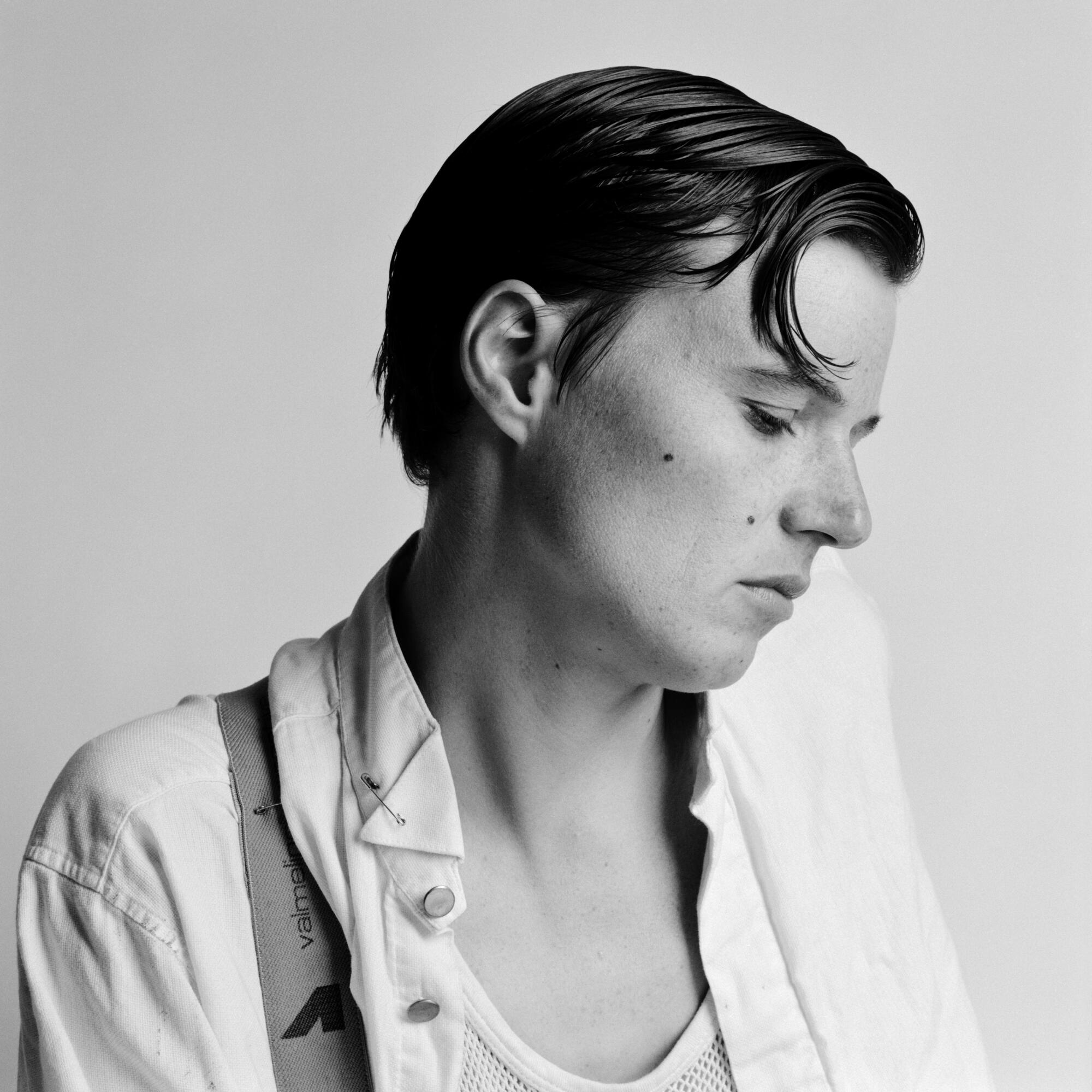
Her portraits spotlight folks in kink communities and subcultures, unapologetically expressing their fullest selves for the camera, such as “Gauntlet Group, 1995” (1995/2024). The photograph frames a group of men and women standing closely together, nude or semi-nude, all tattoos, piercings, genitalia and direct, amused gazes.
Her work has also contributed to conversations about Los Angeles as a mythical place and how queer communities exist within its fraught history. For a time, Opie, a professor of photography at UCLA, lived in an apartment building with a number of other lesbian neighbors; the group lovingly called the space, near 3rd and Catalina streets in Koreatown, Casa de Estrogen. It was there, in Opie’s living room, that artist Judy Bamber carved “Self-Portrait/Cutting” on the photographer’s back.
Opie’s photos of queer folks make up a significant part of her work, but her images of freeways, architecture and queer spaces are also significant. The photographer points out the pay phones and cars that dot the L.A. landscape, markers of a different time. Her photographs capture the 1988 Los Angeles Gay Rodeo in Burbank and places such as the Palms, a West Hollywood lesbian bar that closed in 2013.
In 2016, Times arts and culture writer Deborah Vankin called Opie “an anthropological chronicler of communities” whose work captures groups ranging from “lesbian couples across the U.S.” to “Malibu surfers,” while the Smithsonian awarded her its Archives of American Art Medal.
Reynaldo Rivera
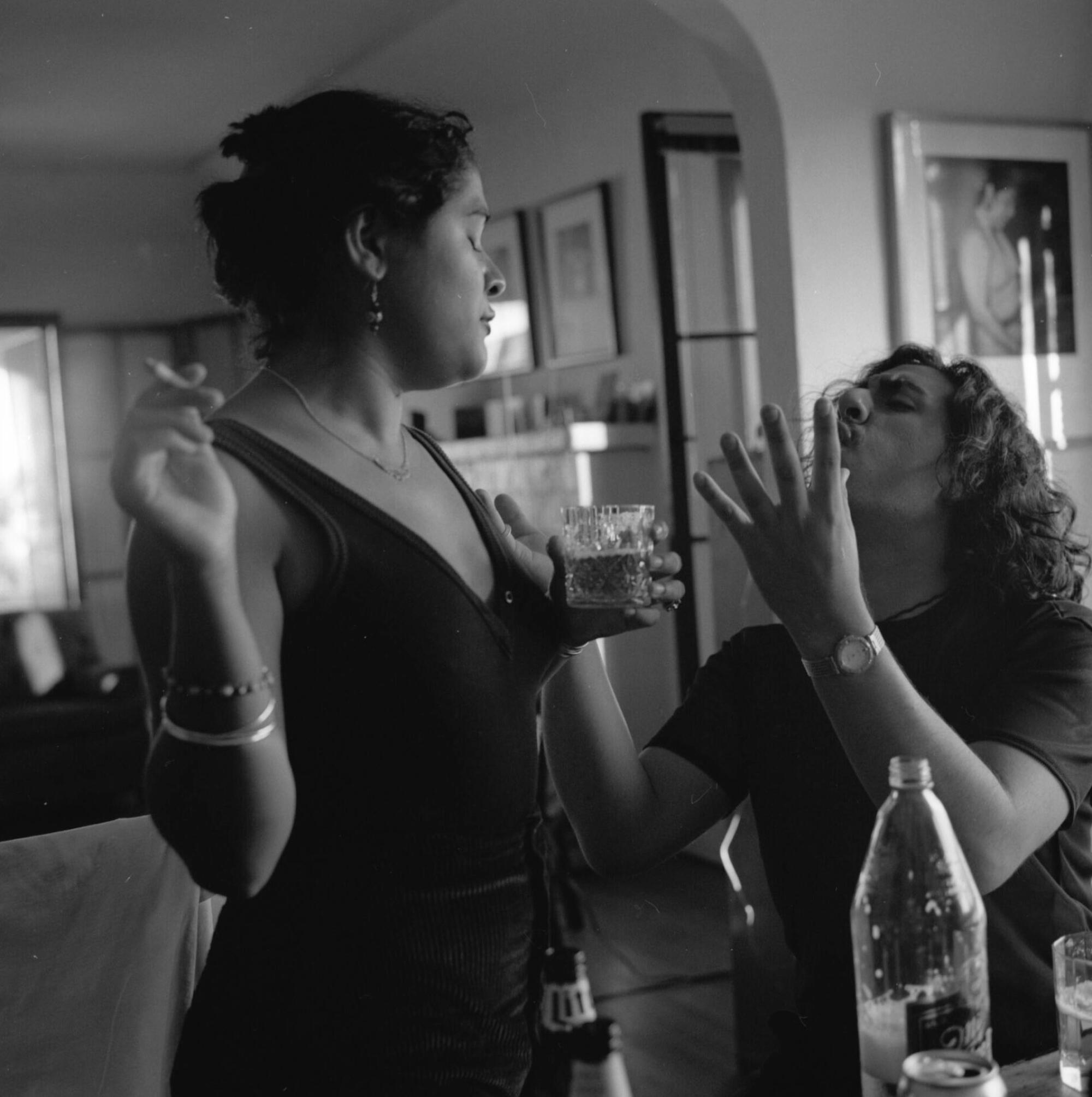
Reynaldo Rivera — currently enjoying his first solo museum exhibition at MoMA PS1 in Queens — has also captured Los Angeles and queer communities over the decades. The artist took photographs of glitterati for L.A. Weekly, and also created images of drag performers, often backstage before a show. Rivera says growing up queer meant not wanting to be pigeonholed, especially about gender. His work explores that, with images that include drag performers in the ‘80s and ‘90s, who he says never quite got their due.
“They influenced so many people at that time because back in those days, it was a very different world,” said Rivera. “And drag was kind of this allure … everything was made in this dressing room. Their family probably didn’t know that they did drag, because in those days, that was considered, like, the worst.”
In the black-and-white photograph “Gaby, La Plaza” (1994), two performers are shown getting ready, surrounded by wigs and outfits. They seem to be mid-conversation, one fixing their hair in a frilly leotard. There’s a sense of energy and movement in the image, but also of being frozen in time.
“The role I played in the taking of most of those photos was that I was part of whatever was going on,” said Rivera. “So it was like I was in the photo. I just didn’t happen to come up. I was on the other side.”
Lauren Mackler, guest curator of the MoMA PS1 exhibition “Reynaldo Rivera: Fistful of Love/También la belleza,” (May 16-Sept. 9) echoes this sentiment. “He’s capturing a thing that’s already happening and he’s complicit in it,” said Mackler. “He’s a participant. It has this feeling of being really alive and really immersive and raw and honest about what it is, without trying to sensationalize anything.”
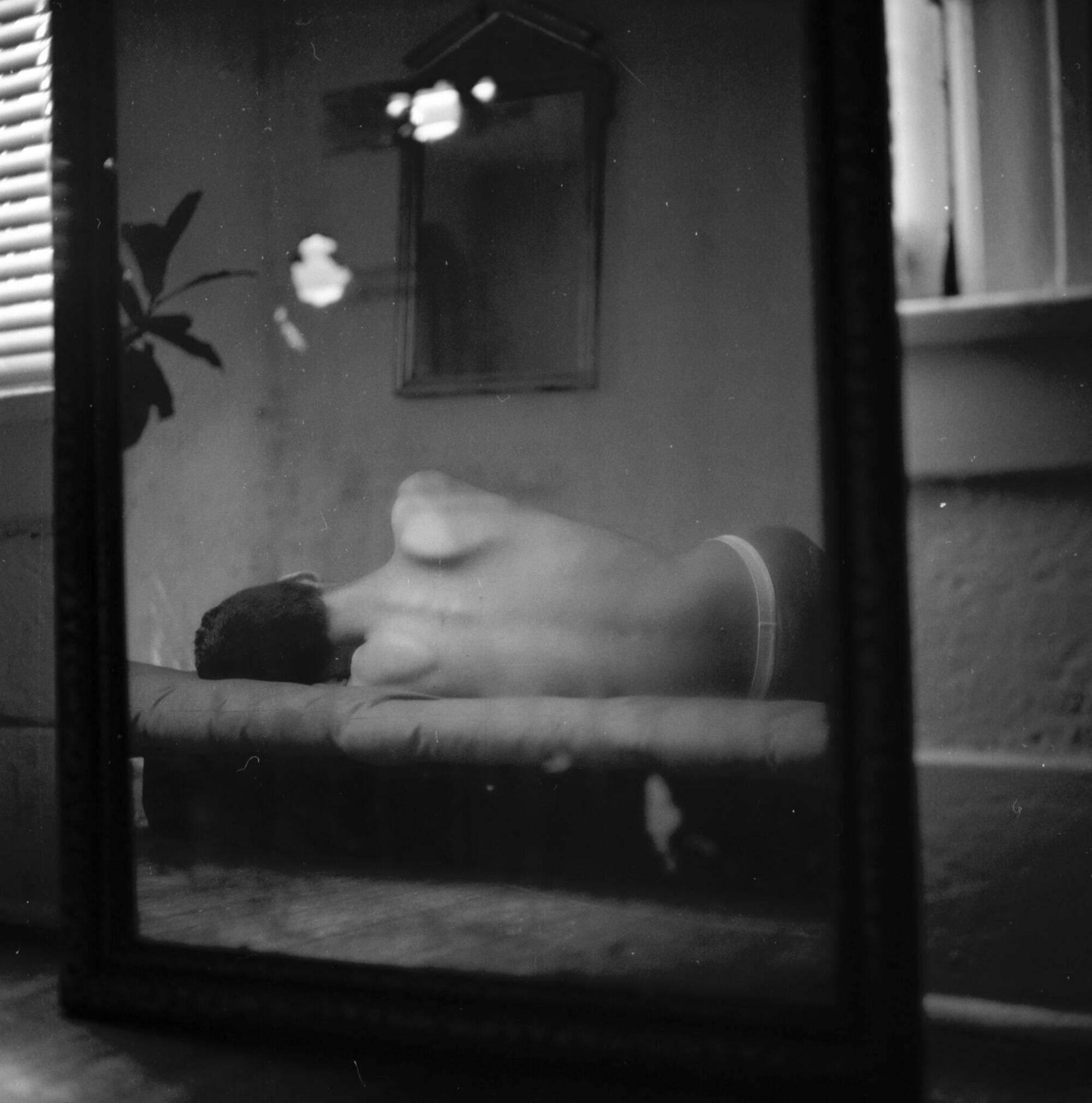
Rivera said he often looked through movie star magazines and watched old Hollywood films while ditching school. His work, he said, is about capturing “a different reality” than what the mainstream might usually perceive.
The work of queer photographers such as Rivera, Opie and Sepuya asks that we look closer, then look again. Sepuya lays bare the artist’s studio and the relationship between subjects through a queer lens. Opie unflinchingly frames her queer domestic life, encouraging us to think about how Los Angeles has changed, how it’s stayed the same, and how our own bodies relate to these shifts. Rivera asks that we recognize the humanity in the queer people he so intimately captures.
What queer photographers have done for decades now is throw open the doors to their lives and the lives of the queer people around them — not just in controlled or carefully crafted moments, but in tender ones, where they are their most vulnerable and authentic.
As in Sepuya’s “Darkroom Mirror (_2070386),” they have not only faced the mirror, but allowed all of us to look along with them.

